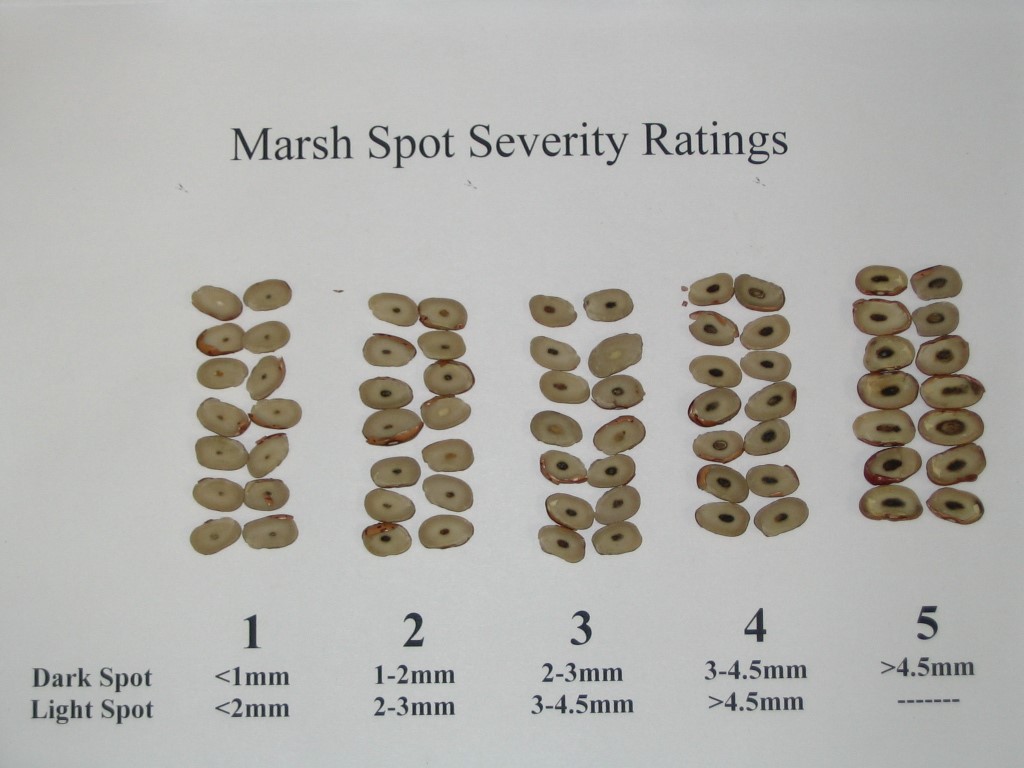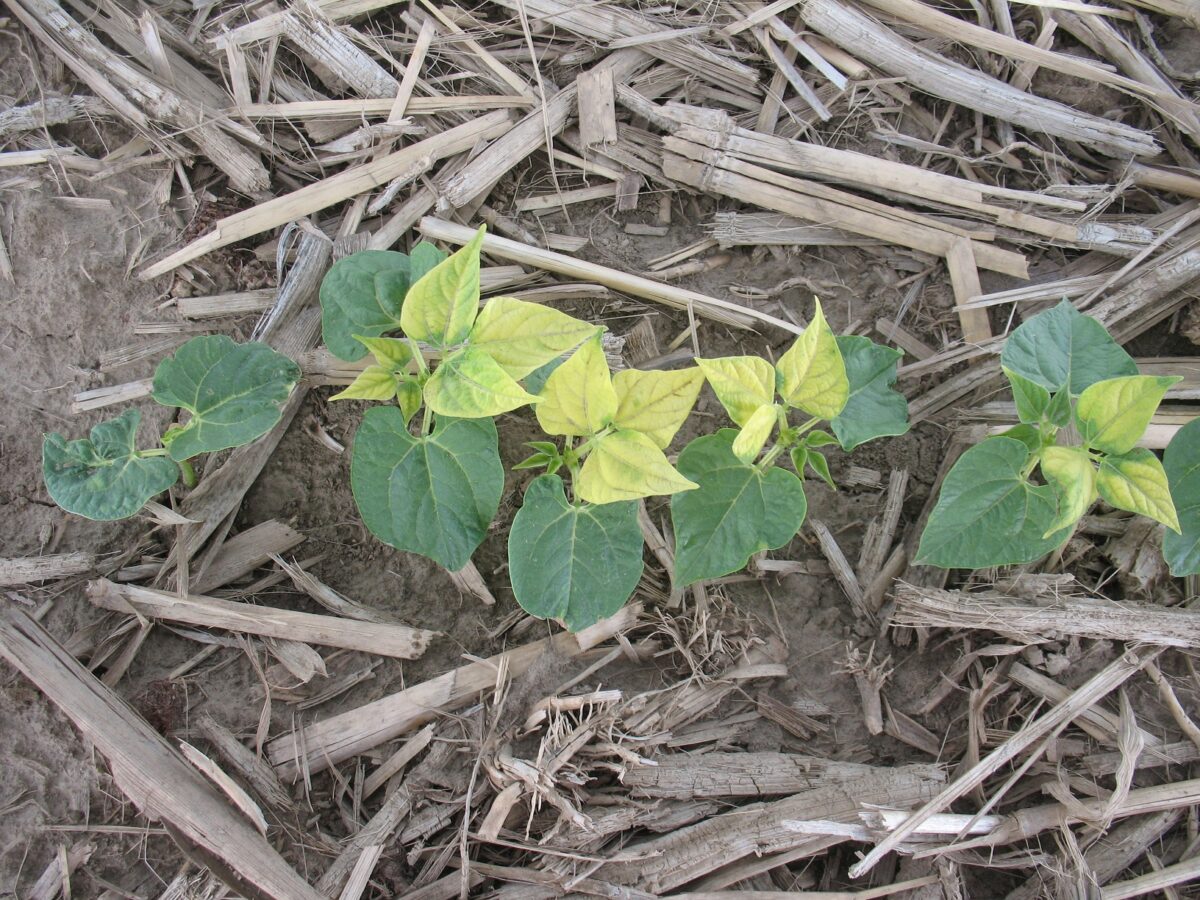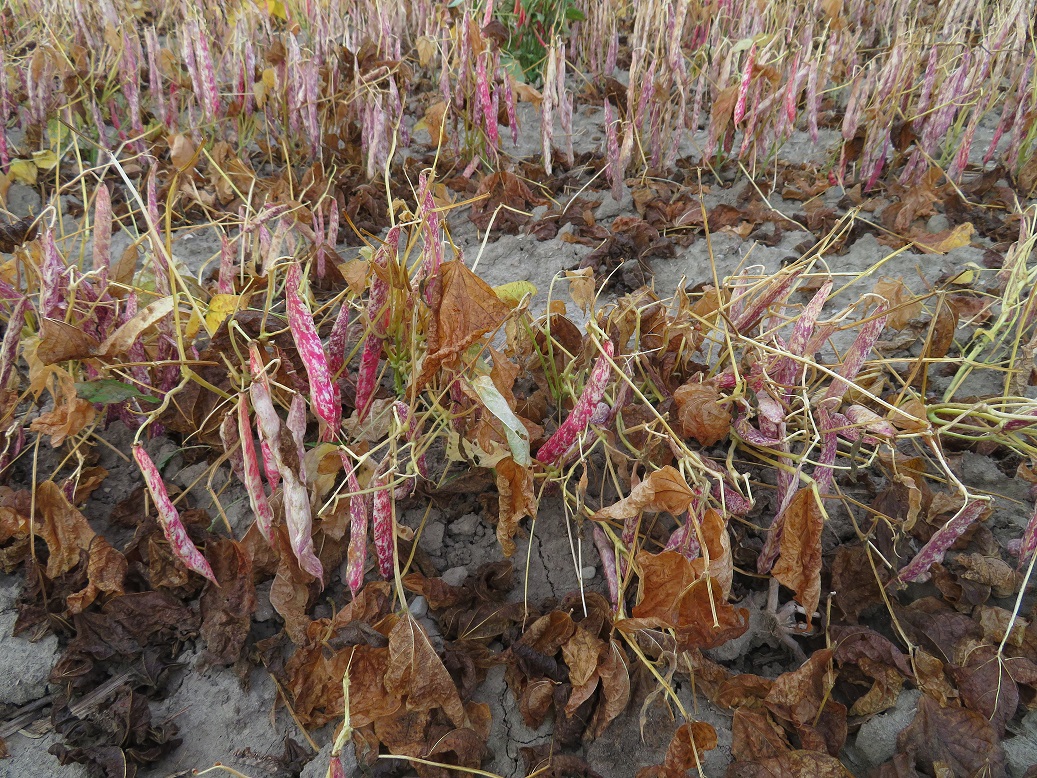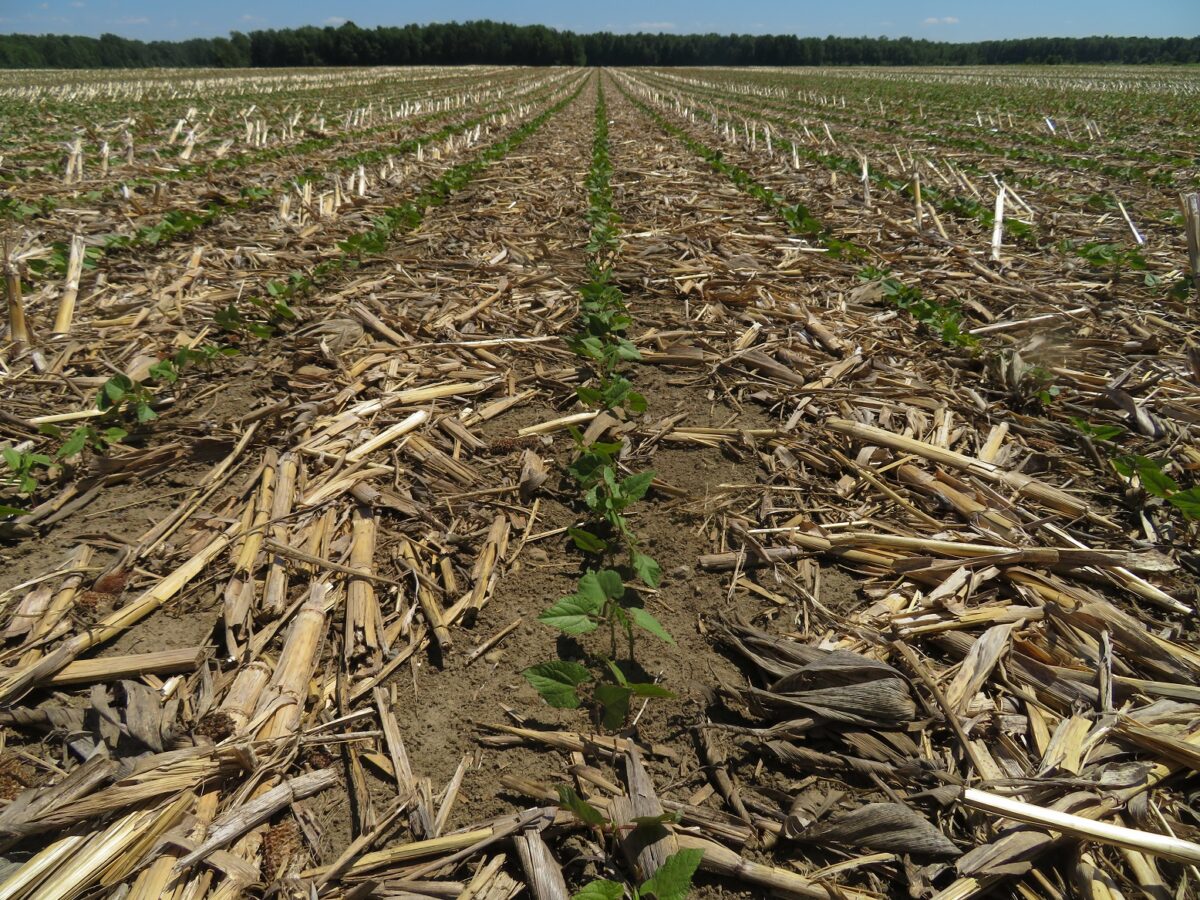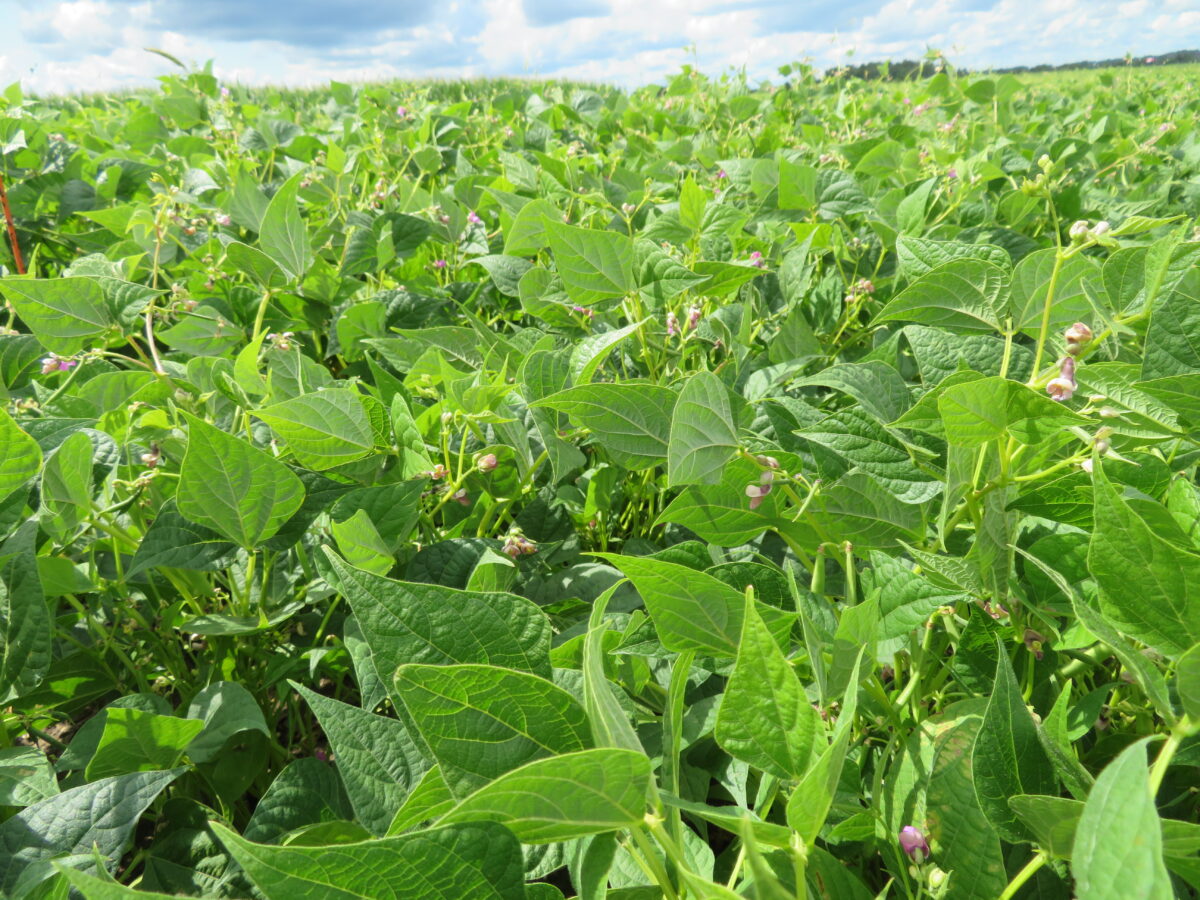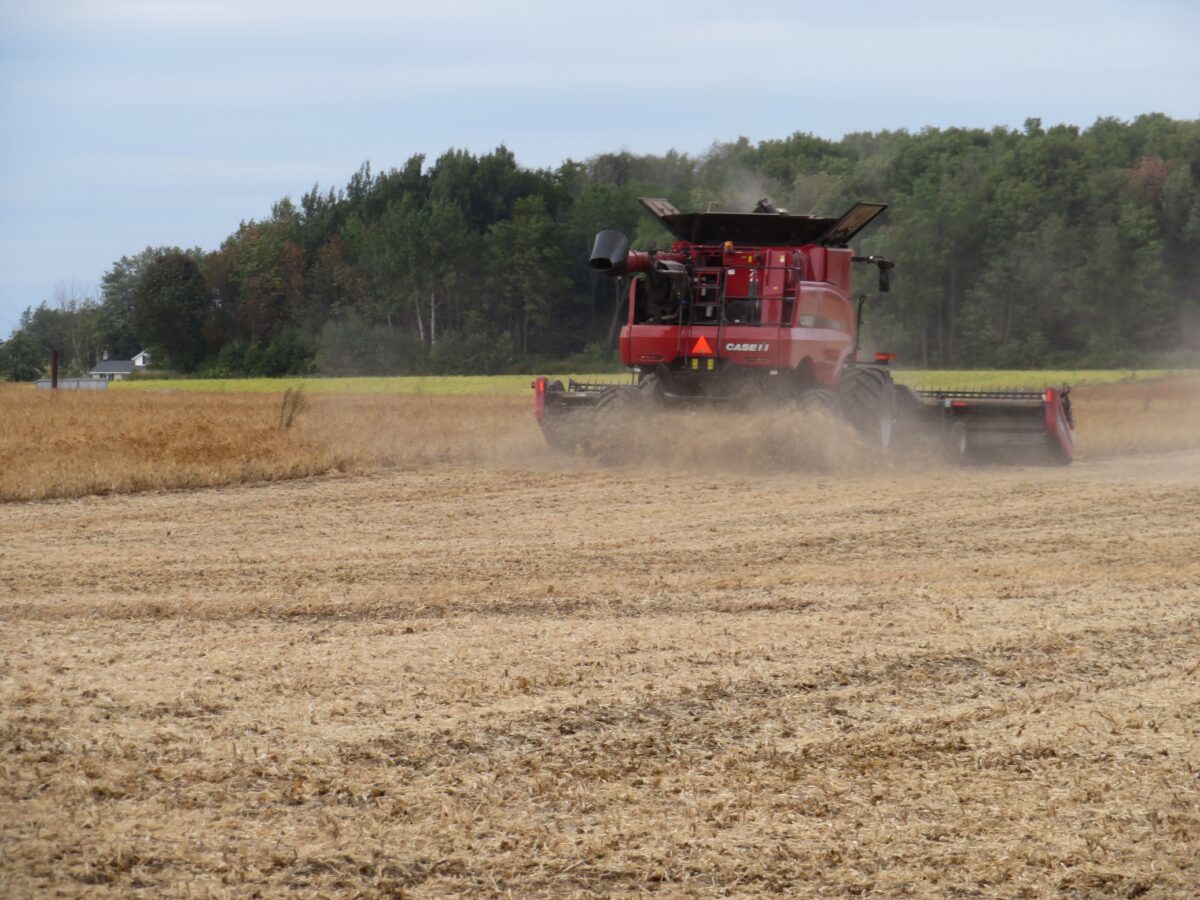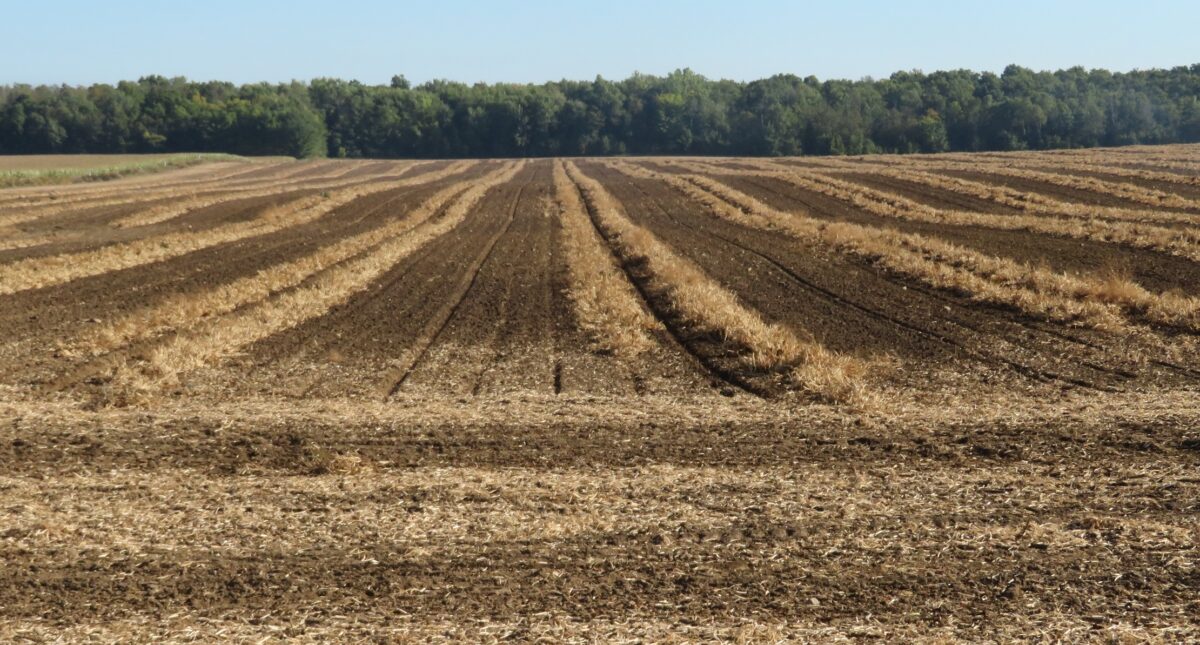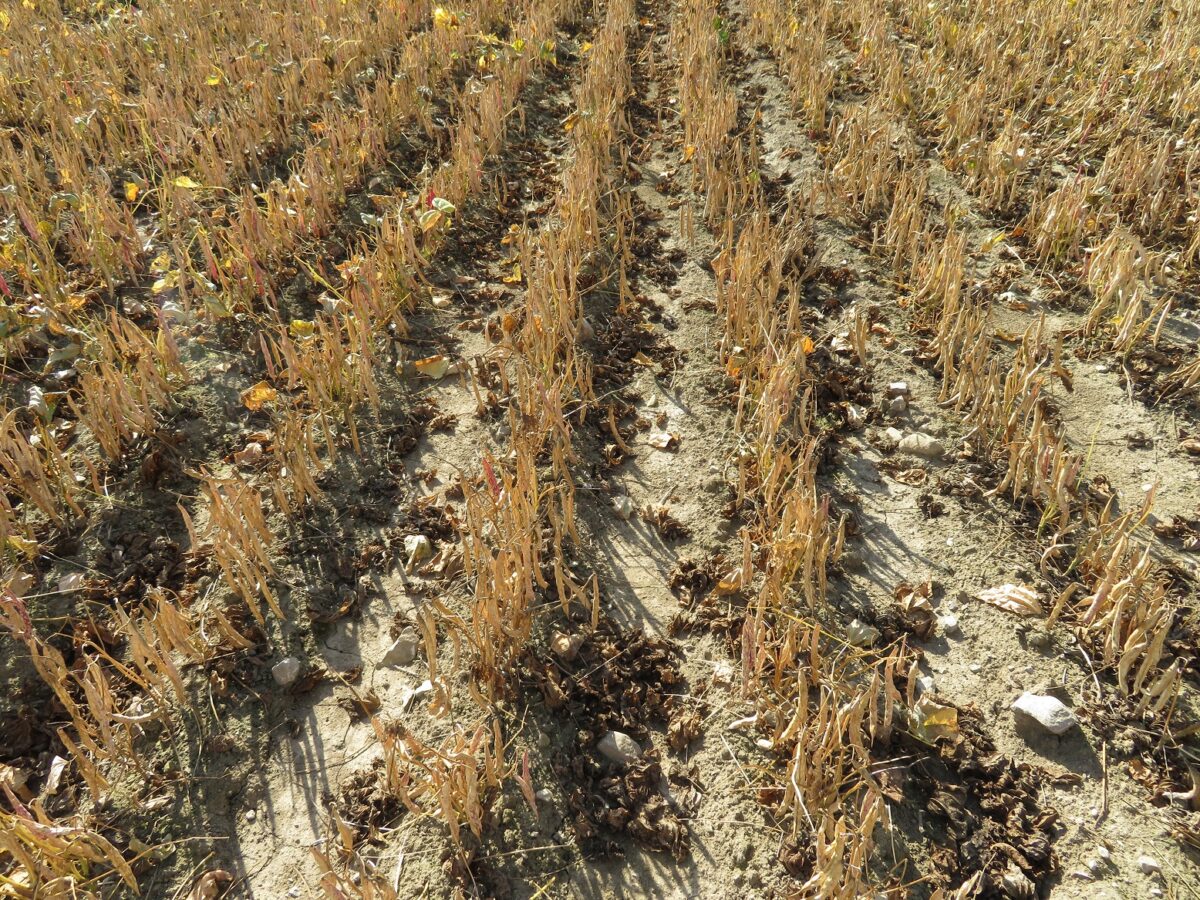This article was written by Mylene Corzo Lopez, University of Guelph Summary Marsh spot is due to imbalanced nutrient supply to crops, mainly associated with manganese (Mn) deficiencies in the pea and bean plants and is not caused by pathogens such as virus or bacteria. It is most often found in cranberry bean seed. Marsh…Continue readingMarsh Spot
Author: Ontario Ministry of Agriculture, Food and Rural Affairs
By: Meghan Moran, Mike Cowbrough (OMAFRA) and Dr. Darren Robinson (University of Guelph-Ridgetown Campus) Group 27 herbicides, commonly referred to as “bleaching” herbicides inhibit an enzyme called HPPD (p-hydroxyphenyl pyruvate dioxygenase). Several herbicides containing Group 27 active ingredients are used pre-emergence or early post-emergence in corn. Dry beans are often grown after corn in rotation…Continue reading“Bleaching” Herbicide Carryover Injury in Dry Beans
Overview Reglone is a true desiccant, used to rapidly dry down plants prior to harvest. Any green plant material contacted by Reglone will be killed. It is rapidly absorbed by foliage but has limited translocation through plants; it is a contact herbicide. There are several generic products sold in Ontario that are equivalent to Reglone.…Continue readingReglone (diquat) and Pre-Harvest Applications
Strip Till
Strip till systems are becoming increasingly common in Ontario dry bean production. Strip till offers the advantage of some tillage in the seed row while reducing the overall amount of tillage and leaving some residue on the soil surface. The strip tiller can be run in the fall or in the spring; some producers conduct…Continue readingStrip Till
Although dry edible beans are legumes, they do not obtain their full nitrogen requirement through nitrogen fixation. Studies have not shown a yield benefit to inoculation with rhizobia. Ontario nitrogen research has demonstrated yield increases in some years but has not shown an economic response to pre-plant incorporated or banded nitrogen. Nitrogen applied pre-flower does…Continue readingNitrogen
Occasionally, the crop may be ready to harvest but the field, or part of the field, may still be green or weedy. Harvesting when green stems or green weeds are present may result in stained beans. Similarly, weeds with purple berries, such as Eastern black nightshade and American pokeweed, can cause severe staining. Also, secondary…Continue readingQuality Preservation at Harvest: General Description
Direct Combining
Bean types most suited to direct harvest include white beans with upright plant type, adzuki beans, black beans and pinto beans. Some larger-seeded types can be successfully direct harvested when grown in narrow row widths and harvested at appropriate seed moisture to reduce seed damage. Combine enhancements help reduce harvest losses and minimize dirt, splits…Continue readingDirect Combining
Larger-seeded beans and beans planted in wide rows are usually pulled and placed in windrows at harvest. Pulling refers to cutting the plants 3-5 cm (1.2-2.0 in.) below the soil surface and merging several of the planted rows into a single swath or windrow. Beans are pulled when 90% of pods have matured and turned…Continue readingPulling, Windrowing and Combining: General Description
Dockage and Pick: General Description
Dockage is anything foreign that is removed from the beans through a screening process. Some items can only be partly removed through screening, such as weed seed, corn, soybeans or other crop types. Severe bean staining from weeds or green material can cause a load to be refused, and quality will be reduced if there…Continue readingDockage and Pick: General Description
Overview Eragon LQ is the most common pre-harvest herbicide used in Ontario dry beans. It is rapidly absorbed by foliage and has mobility within the xylem of plants. It is a broadleaf weed control product and does not have appreciable activity on grass species. Recommended use rate in dry beans: 146 mL/ha (59 mL/ac) with Merge…Continue readingEragon LQ (saflufenacil) and Pre-Harvest Applications
